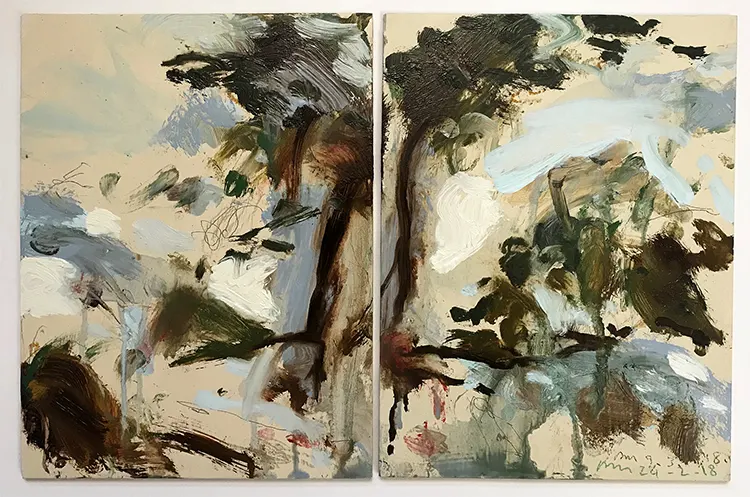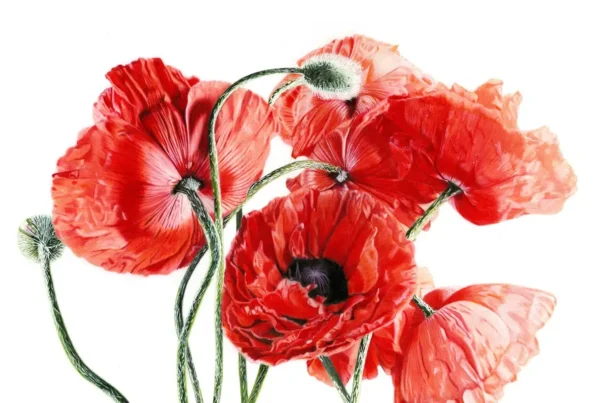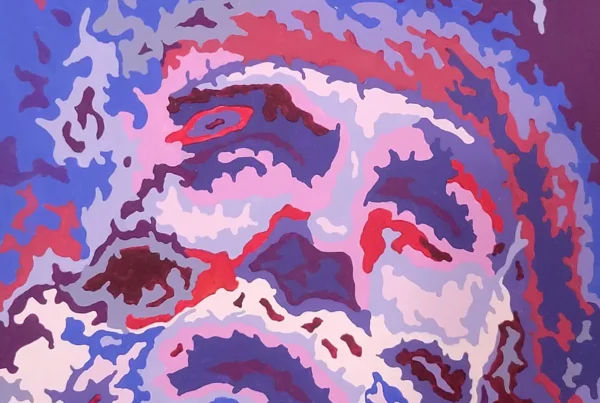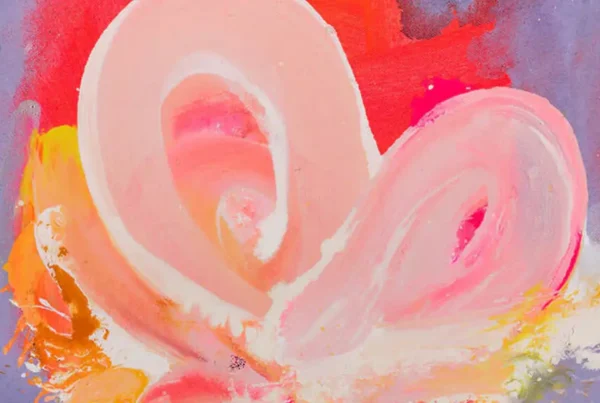“I deal with what is scanned externally and internally in which the object is not the world but the painting itself.”
A Journey Etched in Nature and Nurtured by Mentors
Philip Maltman ‘s early life was deeply intertwined with the breathtaking landscapes of Scotland’s west coast. Nestled a mere couple of miles from the shores offering majestic views of the Firth of Clyde, the islands of Arran and Ailsa Craig, and the vast expanse of the Atlantic, Maltman’s formative years were awash with visuals of farms, fields, rivers, and woods. These vivid landscapes not only shaped his visual experiences but also deeply imprinted on his artistic psyche.
Maltman’s artistic journey found its inception at Carrick Academy in Maybole, under the guidance of his art teacher, Bill Lockhart. Lockhart was instrumental in acquainting young Philip with the nuances of modernism, the rhythm of jazz, and the fervor of shoreline energy. Under Lockhart’s leadership, the academy’s department flourished, marking its presence as one of the premier institutions in Scotland. A testament to its excellence was its award-winning school magazine, laden with myriad pieces of artwork.
Venturing further in pursuit of his passion, Maltman relocated to the bustling environs of Swinging London with his family. He soon found himself amidst the buzzing corridors of Hornsey College of Art in 1968. As part of the Hornsey Commune, Maltman’s perspectives broadened, leading him eventually to Ravensbourne College of Art. This institution became a melting pot of eminent painters, erudite philosophers, and spirited drinkers. Although this environment led Maltman towards a brief phase of rebellion against painting, he emerged as one of the rare stalwarts from his contemporaries, continuing to wield his brush with dedication.
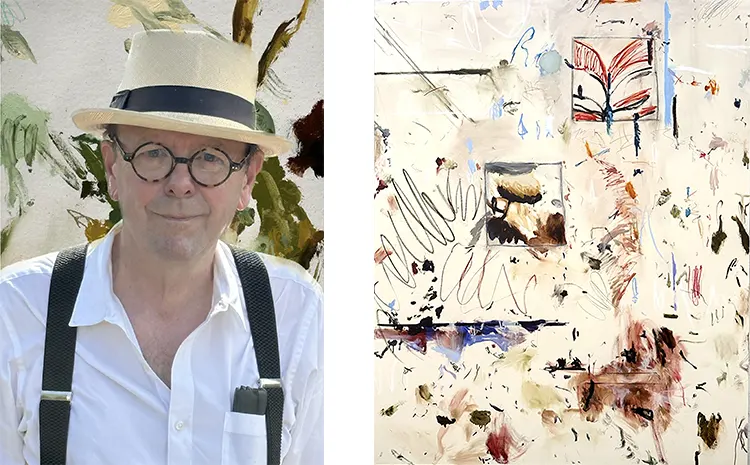
The Layers of Maltman: From Pebbles to Timeless Classics
Philip Maltman’s artistic prowess is epitomized by his meticulous manual manipulation of paint, seamlessly intertwined with intricate drawings and evocative handwritten text. Maltman’s oeuvre delves deep into an array of landscapes, capturing the minute details of pebbles scattered on sunlit beaches and extending to the expansive horizons of deserts, verdant fields, majestic mountains, and the vast expanse of oceans. Rather than anchoring his work to particular locations, he allows a broader interpretation by intertwining references to myriad elements.
Furthermore, Maltman possesses a unique aptitude for reimagining classical works. He skillfully infuses his own perspective into pieces, drawing inspiration from venerable artists like Cuyp, Monet, and Constable. Through these interpretations, Maltman both pays homage to their legacy and introduces a contemporary lens, melding past and present in harmonious synchronicity.
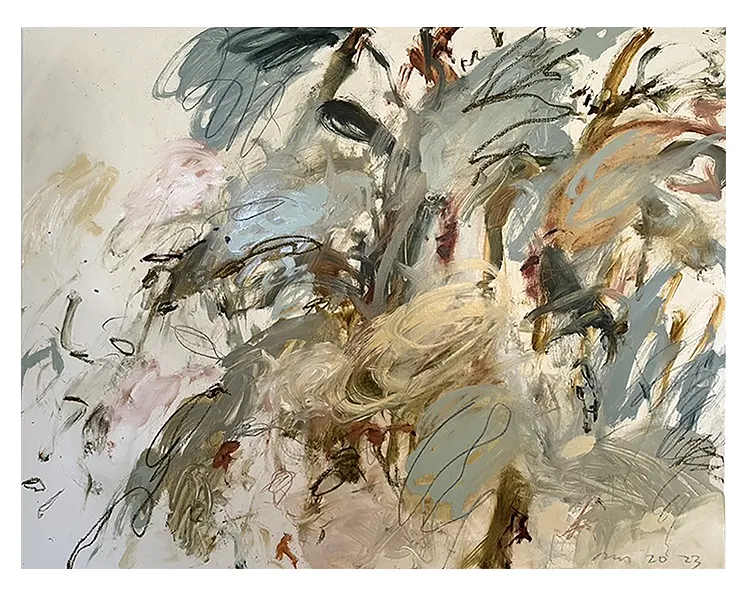
The Inspirations Behind Maltman’s Masterpieces
In the sanctum of Philip Maltman’s creative space, the prominence of oil paints, pencils, and melodies from three vintage iPods is undeniable. Maltman’s artistic vigor drives him at an accelerated pace. Once engrossed in his work, distractions scarcely deter him; even an interruption as mundane as a delivery to his residence offers only a fleeting pause in his creative flow.
Among the pantheon of figures who have deeply influenced Maltman’s artistry are literary giants like James Joyce; musical prodigies such as Don van Vliet, better known as Captain Beefheart; and illustrious painters including Robert Motherwell and Cy Twombly. His reverence for classical composers is evident in his admiration for Bach, Beethoven, Schubert, and the musical ensemble, The Fall. Of particular significance in his extensive art appreciation is Cy Twombly’s “Wilder Shores of Love.” The rendition where written expressions reign supreme over the upper canvas remains Maltman’s most cherished artwork, even after the passage of nearly four decades.
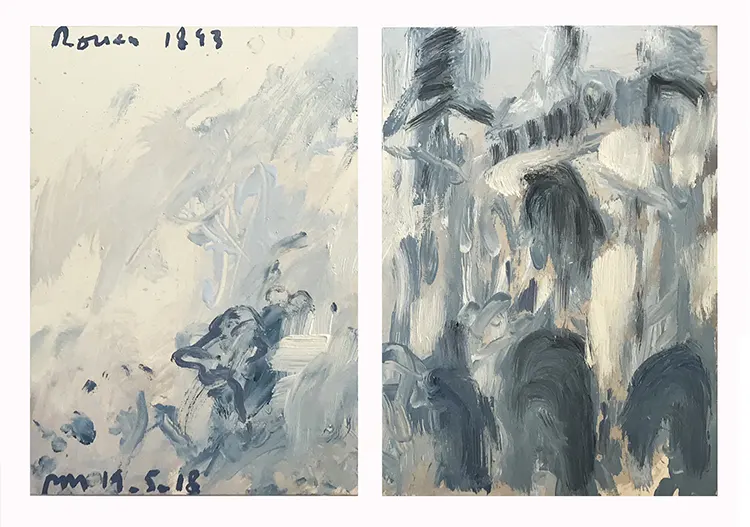
The Ever-Evolving Mediums and Dreams of Philip Maltman
Philip Maltman initially embraced acrylics in his artistic journey. However, around three decades ago, he transitioned to oil paint, a shift inspired by numerous revered artists. The rich texture and extended drying time of oil paints appeal to Maltman, although he acknowledges the potential to return to acrylics under certain circumstances.
Maltman harbors aspirations for two specific exhibition projects. The first, echoing the resonances of Monet’s Rouen Cathedral Series, has garnered praise from Joachim Pissarro, a renowned authority on Monet. Maltman cherishes the ambition of juxtaposing his pieces with at least one original from Monet. The second series, drawing inspiration from “A Road Near a River” by Aelbert Cuyp, holds a special place in his heart. Despite his earnest wish to showcase these pieces at the Dulwich Picture Gallery, the esteemed institution has yet to extend an invitation.
